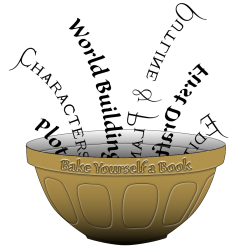Congratulations! Your story is almost complete. You’ve assembled your structure, shaped the flow of your plot, and smoothed out your characters’ development. Its time to add those all important decorations to draw your readers’ eyes.
It can be tempting to rush this section. To give your manuscript a quick read through and consider it done. DO NOT do this. A sloppily decorated cake, with a splodge of sauce dolloped on top and a few unidentifiable iced blobs can put people off an otherwise excellent bake. A spattering of typos or other jolting grammatical errors will do the same.
Where to Start?
It’s time to set your few remaining notes aside for a moment and find a way to look at your work with fresh eyes. Familiarity with your own work means you’re likely to miss any typos or other SPAG errors. Your brain will auto correct, seeing what should be on the page, not what is on the page. That’s why this is the perfect time to read your work out loud, or ask someone to read it to you. Whilst you’re reading, note down or fix any:
- SPAG errors (including typos)
- Difficult to read sentences
- Dull or generic descriptions
- Over complex or hard to follow descriptions
- Mismatched atmosphere and tempo. (Eg. A fast, choppy paragraph in a relaxed scene.)
- Overlong sentences
- Unnatural-sounding dialogue
- Overused words or phrases
At this stage, look for simple fixes rather than complex rewrites. You want to draw the eye with an extra splash of colour or decorative detail, not hack new holes in your bake. And remember to apply these fixes with some finesse. Covering your cake with enough icing to make it sickly can be as off-putting as using no decoration at all.
If something is dull or generic
- Swap out more common words for something more evocative. (Use a shade (crimson, canary, cobalt etc) rather than the more generic red, yellow or blue.)
- Be more specific. (Rather than saying ‘tree’ name the type of tree.)
- Add in extra detail for a stronger picture. (Instead of a ‘skirt’ it could be a ‘pleated skirt’ or a ‘pencil skirt’.)
- Use character-specific words. (One character might call someone ‘fat’ while another would call them ‘chubby’)
Remember to keep your POV character or narrator in mind when making these changes. For example, a farmer would be unlikely to identify one type of sword from another but could name a variety of crops by sight.
If something is over complex or hard to follow
- Break it into parts. If there are multiple details to convey, give each one its own sentence.
- Use a simile, metaphor, or analogy. By comparing something unusual or complex to something more common you make it easier for your reader to visualise.
- Cull unneeded details. You don’t need to describe every blemish or wrinkle on someone’s face for a reader to picture a wrinkled face.
Be cautious when adding similes. One of the first writing lessons I remember is that no simile is better than a bad simile. If you’re describing something wet and durable, don’t compare it to something dry and fragile. Doing so would be like adding chicken to an apple pie. At best it’ll give people pause, at worst they’ll walk away. Keep your similes relevant.
If Dialogue Refuses to Flow
If you can’t knock those rough edges off your dialogue, try this:
- Copy the dialogue only (no tags, beats, or descriptions) into a new document.
- Read it as though you’re reading a play. Try to inject the characters’ emotions into the words.
- Whenever you pause or stumble, ask yourself why. Are the words awkward to pronounce? Does it feel out of character or inappropriate for the situation? Does it fail to fit the mood? (eg. A long ramble where a succinct ‘yes/no’ would do?) Is it unneeded filler?
- Tweak the dialogue based on the ‘why’s above.
- Repeat the above exercise until you’re happy with the dialogue.
- Update the dialogue in your main scene and check everything still flows.
Watch For Bad Habits
Every writer develops bad habits when they write. Identifying and correcting them can make your manuscript more polished. For example, I had a habit of using the phrase, “It was the biggest/tallest thing he’d ever seen.” This was a problem for two reasons:
1) It’s not very descriptive. (The reader has no idea what the character’s experiences are outside the scope of the story)
2) When a phrase is overused readers can pick up on it and get irritated.
Get Reader Opinions
This is an excellent time to share your work with beta readers. More pairs of eyes means more chance of picking up on any typos or other flaws. And if you have missed any structural or scene-breaking issues, a good beta reader will flag those too.
Read More Than Once
As with the assembly and shaping edits, you may need multiple read throughs before you’re happy with the level of polish. I gave my first book The Spymaster and The Rake four or five ‘final’ edits before deciding it was ready to publish.
Congratulations!
Reaching this stage is a massive achievement. Whether you’re working on a short story or an epic novel, following the writing process through from beginning to end takes a lot of work. If you plan to publish, there’s still more to come, from finding an editor to choosing whether to self-publish or go traditional, writing a query to formatting and cover design. But for now it’s time to take a step back, admire you completed work, and celebrate. Perhaps with a piece of cake.
Want to receive updates on new blog posts and a free copy of my short story The Glass Butterfly (8,000 words)? Sign up to my Bake a Book newsletter below.
